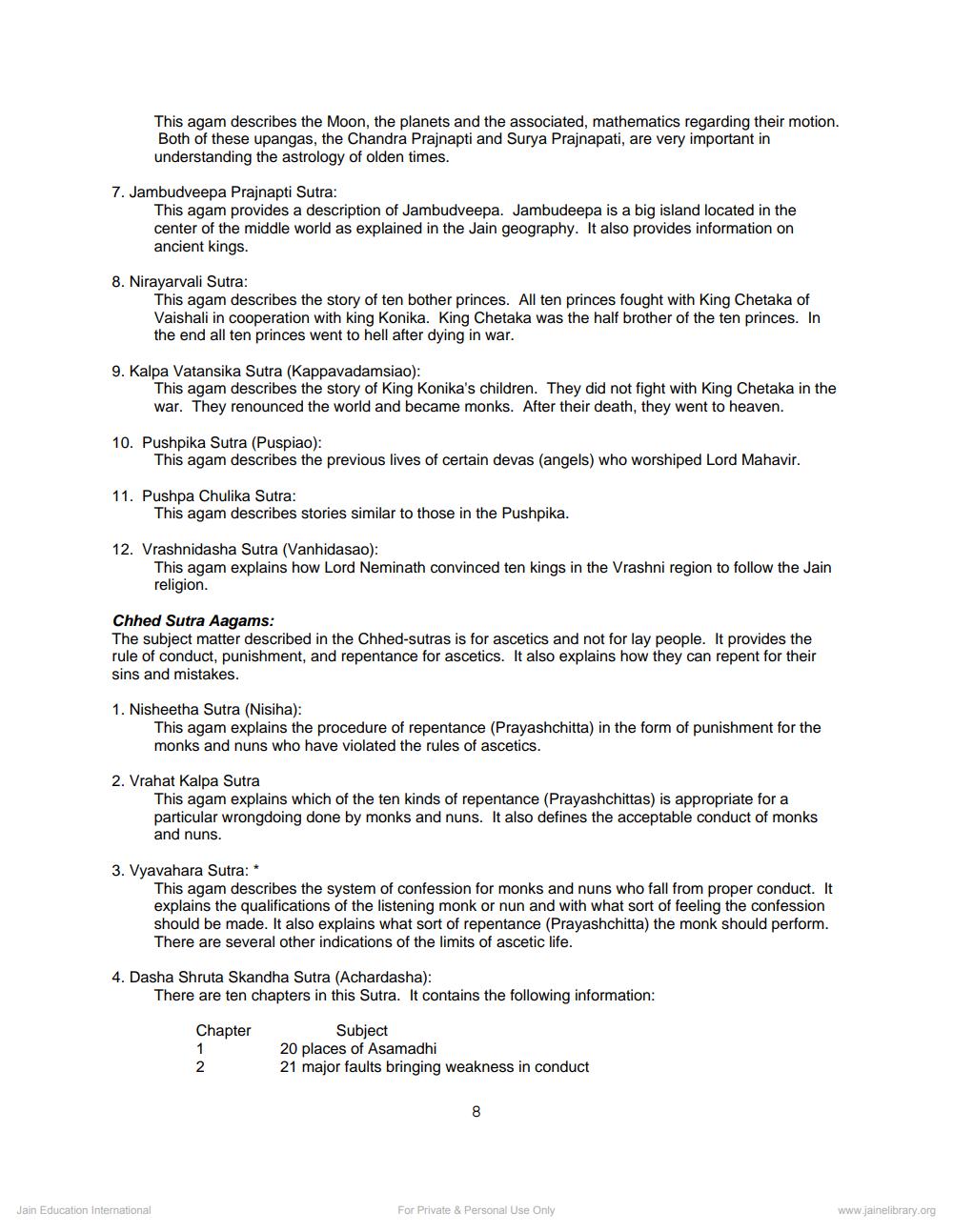________________
This agam describes the Moon, the planets and the associated, mathematics regarding their motion. Both of these upangas, the Chandra Prajnapti and Surya Prajnapati, are very important in understanding the astrology of olden times.
7. Jambudveepa Prajnapti Sutra:
This agam provides a description of Jambudveepa. Jambudeepa is a big island located in the center of the middle world as explained in the Jain geography. It also provides information on ancient kings.
8. Nirayarvali Sutra:
This agam describes the story of ten bother princes. All ten princes fought with King Chetaka of Vaishali in cooperation with king Konika. King Chetaka was the half brother of the ten princes. In the end all ten princes went to hell after dying in war.
9. Kalpa Vatansika Sutra (Kappavadamsiao):
This agam describes the story of King Konika's children. They did not fight with King Chetaka in the war. They renounced the world and became monks. After their death, they went to heaven.
10. Pushpika Sutra (Puspiao):
This agam describes the previous lives of certain devas (angels) who worshiped Lord Mahavir.
11. Pushpa Chulika Sutra:
This agam describes stories similar to those in the Pushpika.
12. Vrashnidasha Sutra (Vanhidasao):
This agam explains how Lord Neminath convinced ten kings in the Vrashni region to follow the Jain religion.
Chhed Sutra Aagams:
The subject matter described in the Chhed-sutras is for ascetics and not for lay people. It provides the rule of conduct, punishment, and repentance for ascetics. It also explains how they can repent for their sins and mistakes.
1. Nisheetha Sutra (Nisiha):
This agam explains the procedure of repentance (Prayashchitta) in the form of punishment for the monks and nuns who have violated the rules of ascetics.
2. Vrahat Kalpa Sutra
This agam explains which of the ten kinds of repentance (Prayashchittas) is appropriate for a particular wrongdoing done by monks and nuns. It also defines the acceptable conduct of monks and nuns.
3. Vyavahara Sutra:*
This agam describes the system of confession for monks and nuns who fall from proper conduct. It explains the qualifications of the listening monk or nun and with what sort of feeling the confession should be made. It also explains what sort of repentance (Prayashchitta) the monk should perform. There are several other indications of the limits of ascetic life.
4. Dasha Shruta Skandha Sutra (Achardasha):
There are ten chapters in this Sutra. It contains the following information:
Jain Education International
Chapter
1 2
Subject
20 places of Asamadhi
21 major faults bringing weakness in conduct
8
For Private & Personal Use Only
www.jainelibrary.org




